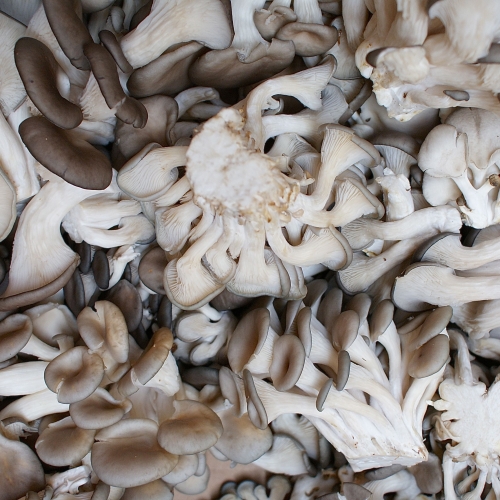
Oyster Mushrooms
When the West Coast wildfires are out, can mushrooms help with the cleanup?
Sep 27, 2020 at 12:00am
When the worst wildfire season on record in the West finally subsides, it will give way to another potentially devastating environmental crisis: toxins from charred and melted plastics, electronics, and other household materials leaching into watersheds, endangering residents, agriculture, and ecosystems. It’s a challenge that cleanup crews struggle to contain, but this year a group of mushroom farmers and ecologists hope to prove that fungi can provide an effective and environmentally safe new tool. They plan to use fungi as filters throughout burn zones in California, trapping toxic waste as water flows through mycelium networks.
Several of the researchers were inspired by the 2018 Camp Fire that decimated the town of Paradise, California. In what became the largest cleanup project of its kind in the state’s history, the town hauled off more than 3.6 million tons of ash, debris, and contaminated soil to landfills and recycling facilities, which can strain waste-management infrastructure. The year-long effort didn’t stop widespread water contamination. Two years later, parts of Paradise are still under a water advisory. The Camp Fire destroyed Cheetah Tchudi’s commercial mushroom operation, TurkeyTail Farm. He knew from farming and studying fungal restoration that mushrooms could filter out some of the toxic waste on the property, but he found very little data on “mycoremediation.”
Tchudi decided to conduct his own research. He launched the nonprofit Butte Remediation and received grant funding to experiment on burned properties throughout Northern California. He is careful not to cast mycoremediation as a panacea but is convinced that fungi can significantly reduce toxic waste on burn sites. Through his experiments, Tchudi says he has reduced levels of heavy metals and persistent organic toxins in soils enough to meet regulatory standards.
“In between the time that the fire event occurs and we get around to cleaning up toxic ash, it can be a stopgap for heavy metals and reduce the toxicity,” he said.
Tchudi was eager to get back to farming full-time, but when this season’s wildfires again threatened his community, he realized the restoration work was far from done. Butte Remediation is now helping CoRenewal, a Santa Cruz nonprofit, with a broader mycoremediation experiment. Starting in October, CoRenewal will deploy erosion control tubes of organic matter (known as wattles) that are inoculated with oyster mushroom mycelium throughout burn zones in California. They are targeting the fire complexes dubbed CZU, the California Department of Forestry and Fire’s designation for the fires covering San Mateo-Santa Cruz, and LNU, the acronym for the Sonoma-Lake-Napa fires. CoRenewal will take soil samples and compare the effectiveness of the fungi with control wattles that are not inoculated. The goal is to prevent contaminated sediment from reaching waterways and to collect baseline data on mycoremediation’s efficacy.
